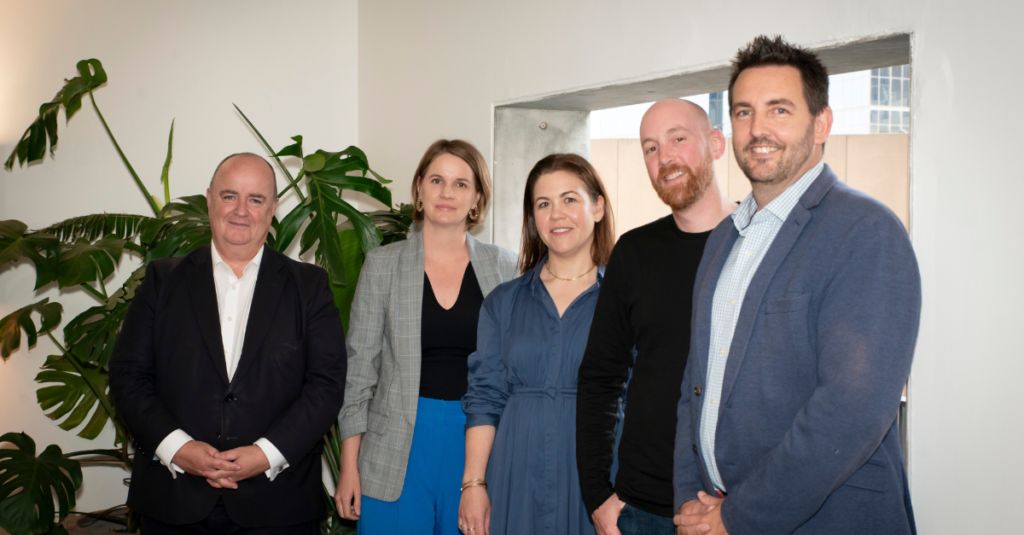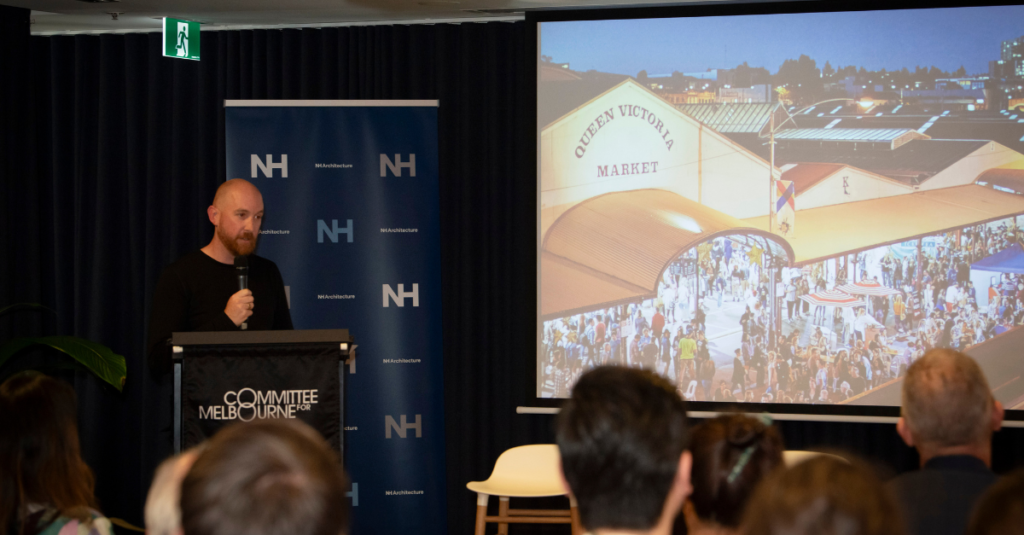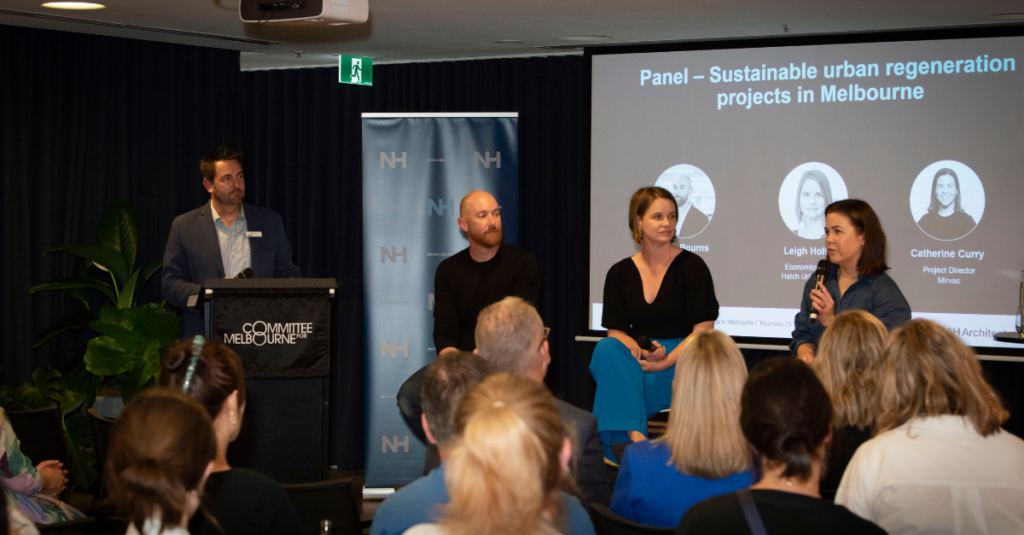08.12.2023Shaping Melbourne’s future: insights from NH Architecture on sustainable urban regeneration
As Melbourne’s population nears 6 million, and Melbourne’s growth model increasingly shows a gap between the inner city and outer suburbs, it is important we consider ways to address this emerging ‘Tale of two cities’. That’s why our members recently travelled to NH Architecture’s offices for the event “Sustainable urban regeneration projects in Melbourne”, to hear about ongoing projects to revitalise the city.
Nick Bourns, Director, NH Architecture, provided a keynote address, discussing how urban regeneration projects can be an advocate for people who use the place, the responsibility to consider climate change and biodiversity loss and the influence the projects have on shaping our city. Nick highlighted the crucial link between a place’s past, present, and future. “Places are shaped by what they are today, what they’ve been in the past, and most importantly, what we need them to be in the future. Any new development needs to recognise these historical storylines as a starting point to build and extend upon.”
Nick was joined by panellists Catherine Curry, Project Director, Mirvac and Leigh Holford, Economics Principal, Hatch RobertsDay. The panel session was moderated by the Committee’s Director of Engagement Mark Sinclair. The panellists highlighted that several ambitious urban regeneration projects are underway across the city, transforming Melbourne’s underutilised urban areas into vibrant precincts. These include Burwood Brickworks, Market Square in Geelong and the Queen Victoria Market Renewal. The Queen Victoria Market renewal project in particular will co-locate housing, commercial, retail and health programs together with transport connections to enrich the urban environment and create both economic opportunity and social value.
Panellists discussed ways that a vision for a project and its outcomes, as well as social and environmental goals, can be developed upfront. There is a need for tangible outcomes to be measured and be easily explained and meaningful. The roles that measurement, such as ratings tools can play, was also considered important. Additionally, active engagement with the community is essential for positive outcomes.
The Committee would like to thank all panellists for contributing to the conversation, and to the host NH Architecture for welcoming our members. Together, we’re working towards a Melbourne that aligns its past, present, and future.


